Presenting a new harp guitar tutor for the New Year!
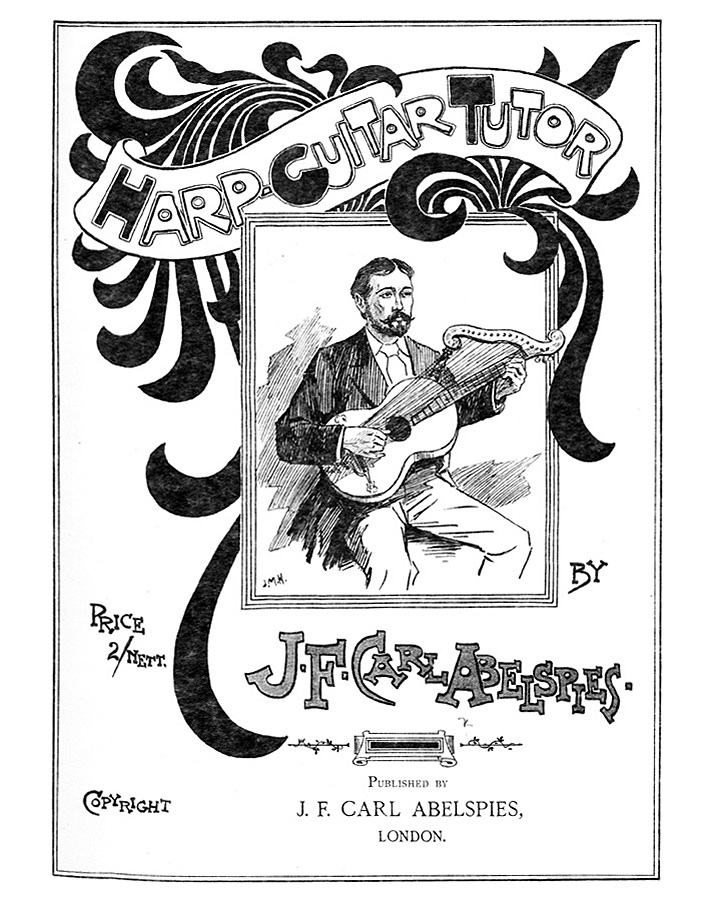
Unfortunately, you’ll all have to relearn your instrument if you hope to utilize this rare historical resource…
Yes, it’s just one of the many iterations of the instrument that musicians, luthiers and sometimes complete idiots have invented over the years.
John Frederick Carl Abelspies (pronounced “able” + “spies”) was certainly not the latter, though judging from the fact that neither he nor his instrument is remembered today, we can conclude that his idea was at best ill-advised.
Abelspies’ invention has been on the Patents page of this site from the beginning, though I no longer recall how I first learned of it. A resident of Glasgow, Scotland, he filed his patent in both the United States and Germany (and presumably in the U.K. and elsewhere) in October 1892. It was granted the following May and July, respectively, by the two known countries, and his undated self-published London tutor is likely from this same period.
His patent was also from the beginning a nice piece of harp guitar organology which helped me as I collected the evidence and formed my definition and arguments. Indeed, it was, and remains, one of the very earliest examples of a true harp guitar being termed as such, Abelspies’ own reasoning foreshadowing ours today: His instrument “… may be termed a harp-guitar, as it combines along with a guitar of ordinary or special construction, a number of strings strung after the manner of a harp and plucked by the fingers as in that instrument.”)
However, what actually influenced his uniquely-tuned instrument was not the harp, but the zither. The rare tutor, which I obtained from the British Library, gives us a hint of Abelspies’ thought process when he says, “Those who know the Zither, Guitar or Banjo are fully aware of the drawbacks these Instruments have for accompaniment purposes.” For those not fully aware, he explains, “The Zither has the disadvantage that it must be played on a suitable or special table besides its difficulties in regard to playing” (whatever those difficulties are). As for the guitar, it is “too difficult to be played in ‘all’ Keys and modulations, especially in modern music.” Ah, that pesky 1890s Scottish music! As for the poor banjo, it’s because it “has no foundation notes,” but we already knew that.
So, to make his 16-string harp-guitar easy to modulate in and out of any key, Abelspies provided open chromatic strings…but not descending basses, as in other European and American harp guitars, but a tuning in a circle of 4ths/5ths borrowed from the very zither he called difficult. And so, of his 11 floating strings, the lowest pitch is the D below a standard guitar’s low E. Frankly, I’m surprised that he didn’t decide to more accurately call it a “Zither-Guitar” – which, as some of us have observed (I’ve done a few blogs on the subject), is what our own instruments actually are structurally! (But glad I avoided that rabbit hole!)
If he had left it there, Abelspies might have had a logical and learnable harp guitar. But no, he had to muck it up with his fretted neck. Instead of leaving it in standard guitar tuning, he used five strings tuned low-to-high B♭, E♭, then G-B-E. Here’s how his “simple” system thus ends up:
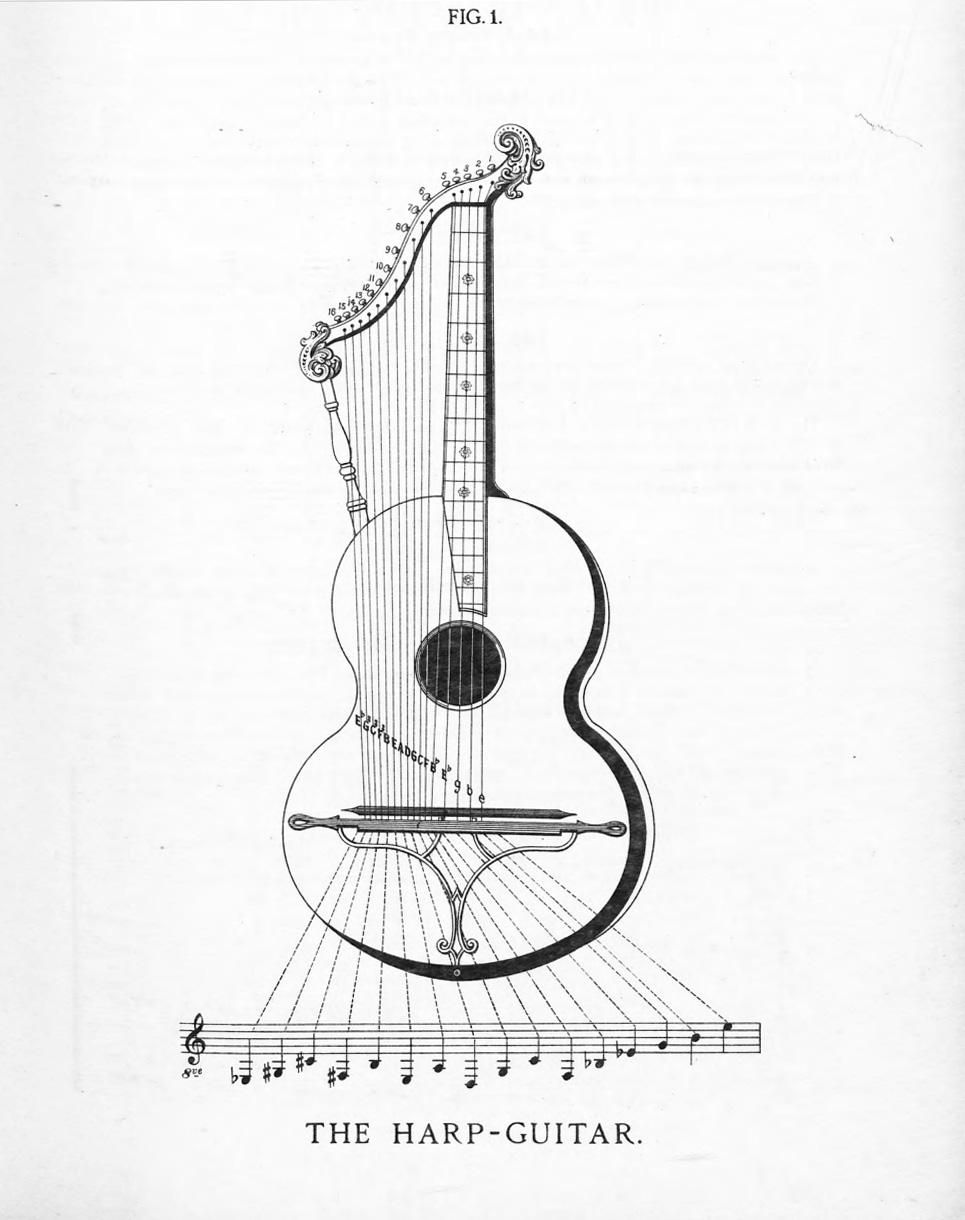
Hey, but at least we now have his original tutor to help us out!
(Serious scholars are welcome to contact me privately about the 28-page PDF document.)

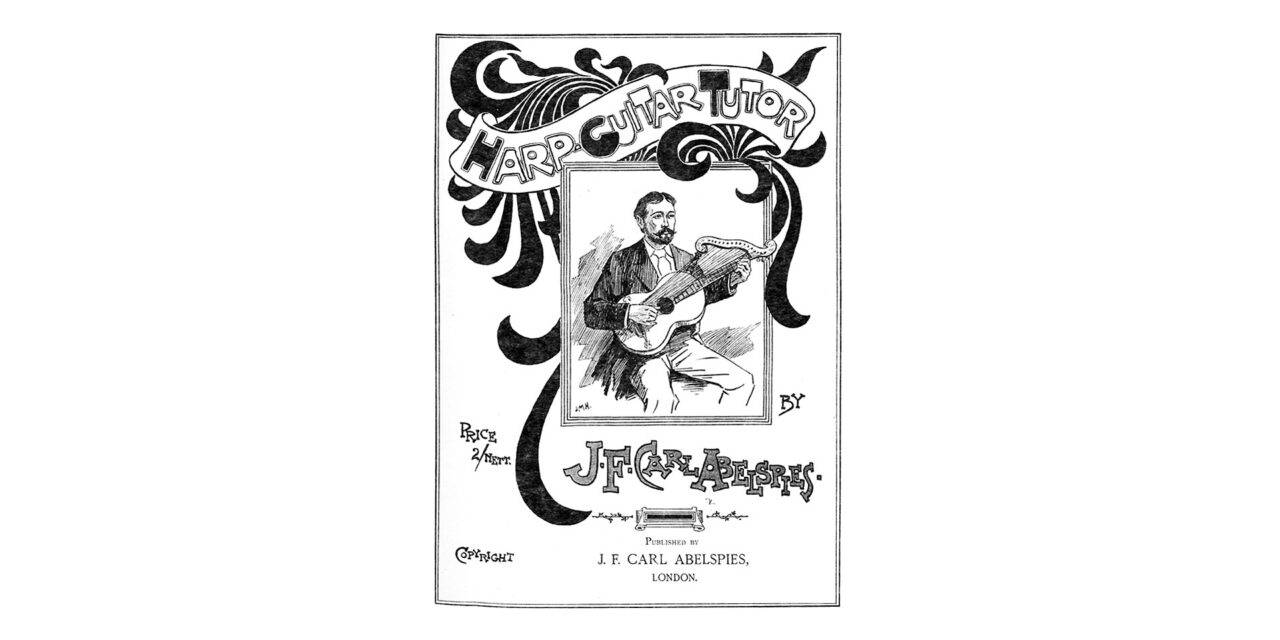
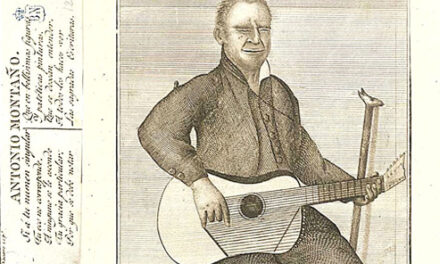
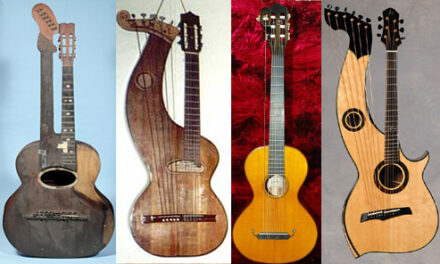
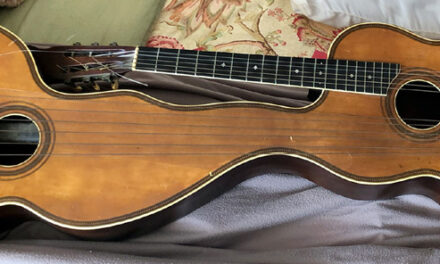
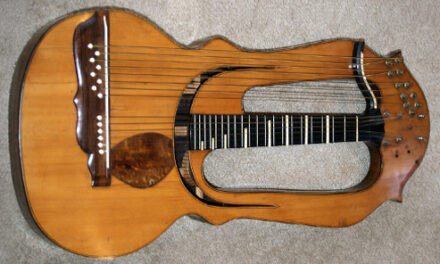
Wow, Gregg, what a discovery! I wonder what else is lurking at the Library? I spent several days there a few years ago researching a very different area, but its got to be one of the richest and most accessible to the public institutions of its kind in the world. Thanks for all that you do. I’m looking forward to much more in 2022.